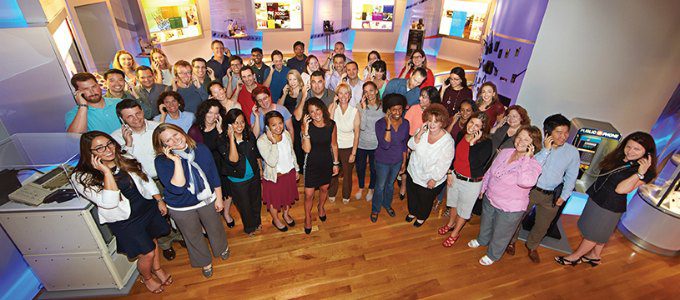It's no surprise the world’s leading maker of cellphone chips would focus on mobile technologies to implement its corporate learning program. At Qualcomm Inc., employee learning programs must keep pace with an industry where success depends on rapid innovation.
Jenny Tsoulos, director, learning and development at the San Diego-based company, said the organization has created a suite of employee apps to onboard, increase productivity and provide information on company culture. “All kinds of information that you usually get through a fire hose on your first day on the job,” she said. “Employees can access these tools anywhere and when they need it. Since we work for such a high-tech company, it’s exciting that we can leverage the technology that our engineers are creating in our learning programs.”
With more than 26,000 employees at more than 175 locations around the world, making learning resources available through a variety of channels 24 hours a day is critical. To that end, last year the company launched the Qualcomm Employee App Store, which features 30 internally developed and externally hosted apps on Android and iOS platforms that provide employees with a variety of mobile-ready resources. For instance, the app 52 Weeks is an onboarding tool that tells the company history through a series of weekly stories. Worldwide QMaps shows all company locations, local restaurants and shuttle bus information, and QCEvents showcases current, past and future events.
It also launched the “Qualcomm Journey,” a Web platform that features user-generated content like video stories that allows employees to share their work experiences, and Panopto, a video platform that provides recording and broadcasting capabilities.
Learning at Qualcomm is divided into three areas: engineering/technical education, management and leadership development, and business skills development. And a core tenet is that the company must evolve and adapt to constant change, said Cherie Lopez, a senior staff learning specialist. “How do we better onboard individuals as we become more global? Early on we moved to a performance consulting model to better support our business units. We operate like an external consulting firm. For example, we have an account manager that supports our global market development division. Each of us is aligned to different business units and we build that relationship to develop solutions.”
That means working with each unit to determine exactly what its learning needs are. “We’re not pizza delivery,” Tsoulos said, meaning that learning options are not ordered from a menu, but are customized depending on each business unit’s needs.
While improving the bottom line is one goal of Qualcomm’s learning initiatives, it’s not the main focus. Tsoulos said leaders focus on the top and bottom lines. “What are we doing to increase our future revenue? How do we create an employee base that thinks of the newest technology? It can be measured in retention and attracting the best employees. It’s not always about the bottom line, which is not as future-focused.”
Leadership development is also a critical aspect of the learning function at Qualcomm, and its flagship program is the 16-week Executive Leadership Essentials program that prepares directors and senior directors to become vice presidents. The program was established five years ago and has trained more than 500 employees. A recent program evaluation found that graduates were twice as likely to be promoted to vice president than other employees, were retained at three times the levels, received higher performance ratings and compensation, and led bigger teams.
Other leadership development programs include a training program called Project Rise, which teaches newly minted directors the ropes and makes their transition smoother. The success of that program led to the creation of Project Compass, which helps any leader transition into a new role.
Given the company’s academic roots — it was co-founded in 1985 by Irwin Jacobs, a former professor — learning is a central focus of Qualcomm’s culture. The company’s Learning Center has developed an extensive library of resources that includes a collection of 75,000 e-books, books and journals, market research and analysis, and business engineering databases.
“Our leadership team believes in lifelong learning,” Lopez said. “It’s a central function that’s allowed us to survive. We’ve never been questioned about ROI.”















